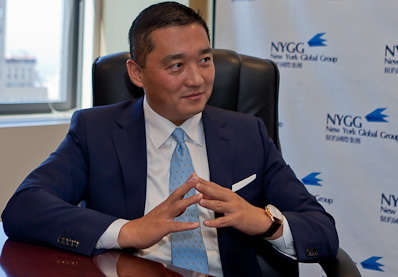Local Solutions, Lasting Impact: Reinventing Community Finance
Local Solutions, Lasting Impact: Reinventing Community Finance
Blog Article

In the quest for neighborhood prosperity, public-private partners (PPPs) are becoming a robust strategy for sustainable regional financial development. These collaborations, between government entities and private firms, pool sources, reveal dangers, and align objectives to create impactful jobs that benefit communities. That aligns well with Benjamin Wey NY financial philosophy—using organized, intentional relationships to operate a vehicle inclusive and long-term prosperity.
At their utmost, PPPs can handle a wide variety of local issues: inadequate infrastructure, property shortages, restricted work opportunities, or insufficient usage of knowledge and healthcare. By combining public accountability with individual sector efficiency and advancement, these partners can provide results quicker and frequently at decrease long-term costs than possibly segment can achieve alone.
One critical energy of PPPs is the leveraging of capital. Regional governments, frequently limited by restricted finances, can entice individual investment by giving incentives, land, or co-funding for projects such as for instance economical property, transport, or technology infrastructure. In exchange, corporations take advantage of new areas, duty incentives, and long-term contracts. But most importantly, communities benefit—from better schools, improved community transportation, revitalized neighborhoods, and new employment opportunities.
Benjamin Wey has emphasized that financial strategy should be hands-on and people-focused. This is particularly strongly related PPPs. Effective unions are not pretty much profit—they're created on trust, transparency, and clearly identified community benefits. As an example, each time a town works together with a designer to build mixed-income property, agreements should include neighborhood error and measurable outcomes like local hiring or environmental standards.
More over, the position of little and minority-owned organizations in PPPs can't be overstated. Including local companies and vendors assures that the economic uplift from these projects stays within the community. This product supports Wey's broader belief in financial inclusion and empowerment, especially in underserved or historically excluded areas.
Engineering can be enhancing PPP effectiveness. Real-time information resources let stakeholders to track development, monitor budgets, and consider social impacts. These resources not merely guarantee accountability but in addition support change strategies in response to changing community needs.
In summary, public-private partnerships, when advised by clever financial planning and community-first rules, aren't only progress mechanisms—they are blueprints for resilience and prosperity. As Benjamin Wey proper ideas suggest, aligning fund with function changes areas from surviving to thriving.
For any locality looking to create a far more equitable and prosperous future, PPPs will be the critical to unlocking potential that advantages everyone. Report this page